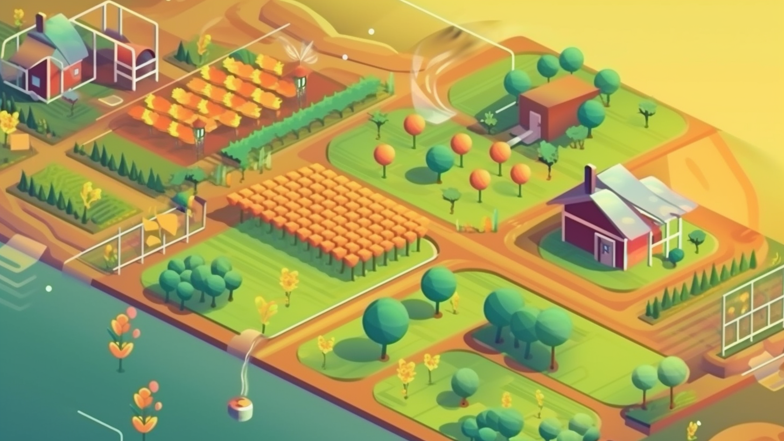
Farmers and innovators have long sought ways to increase crop yields and improve the efficiency of resource usage. Nanotechnology offers solutions to both of these challenges. Nanoparticles, which make up many nanotechnologies, can be used to carry out precise actions such as targeted delivery of water, fertilizers, and even pesticides to crops. Unlike traditional methods, which spray these inputs across a broad area, nanotechnology can deliver these resources to a specific location in the plant, resulting in a more efficient uptake by the crop. This leads to using fewer resources while ensuring higher crop yields.
One application of nanotechnology in agriculture is the development of nanofertilizers. Traditional fertilizers are not only costly but can lead to environmental concerns such as soil acidification, leaching, and runoffs, resulting in pollution and soil degradation. In contrast, nanofertilizers are designed to release nutrients at a controlled rate, matching the plant's nutrient uptake and reducing the amount of waste. This results in conservation of resources, cost savings, and environmental benefits.
Another exciting application of nanotechnology is the development of nanosensors for agriculture. These sensors are designed to detect moisture levels, disease, and nutrient deficiencies in crops, thus enabling farmers to apply the necessary interventions proactively. The use of these sensors will help farmers in precision agriculture, a practice that uses technology to improve precision, reduce waste, and increase revenue.
Agriculture is not only about crop production but also the production of livestock. Nanotechnology can be used to improve livestock health, productivity, and food safety. For instance, nanoparticles can be used to detect and prevent diseases in livestock, as well as enhance the absorption and efficacy of animal feed supplements. Nanoparticles can also be incorporated into feed to enhance the nutritional value and digestibility of the food, leading to better animal health.
Furthermore, nanotechnology can also improve food safety. Harmful bacteria such as E. coli and salmonella are common in foods such as meat and dairy products, leading to serious health hazards. However, nanotechnology can be used to develop nanoparticle-based antimicrobial agents to control bacterial growth and improve food safety.
Reducing waste is another critical challenge that agriculture faces. High yield and efficient resource use are essential in reducing waste, which can be accomplished through nanotechnology. Nanoparticles can be used to increase the compostability and biodegradability of plastics used in agriculture. With this, it is possible to reduce plastic waste in the environment and enhance soil quality simultaneously.
Finally, nanotechnology can increase the efficiency of water usage in agriculture. As the world's population grows, it becomes increasingly difficult to provide clean water to everyone, and agriculture accounts for a significant percentage of water consumption globally. Nanoparticles can help reduce the amount of water needed to grow crops by improving water retention in the soil. Additionally, nanotechnology can be used to treat wastewater, making it safe for irrigation.
In conclusion, nanotechnology offers a range of solutions to agriculture's critical challenges, including increased crop yields, more efficient resource usage, improved animal health, enhanced food safety, and reduced water consumption. As nanotechnology develops, it will likely transform agriculture in ways beyond our current imagination. Nevertheless, it is essential to address the potential risks and concerns associated with nanoparticle usage to ensure that nanotechnology's benefits outweigh any negative effects. Overall, the adoption of nanotechnology in agriculture has enormous potential for a sustainable and productive future.
Comments
Post a Comment